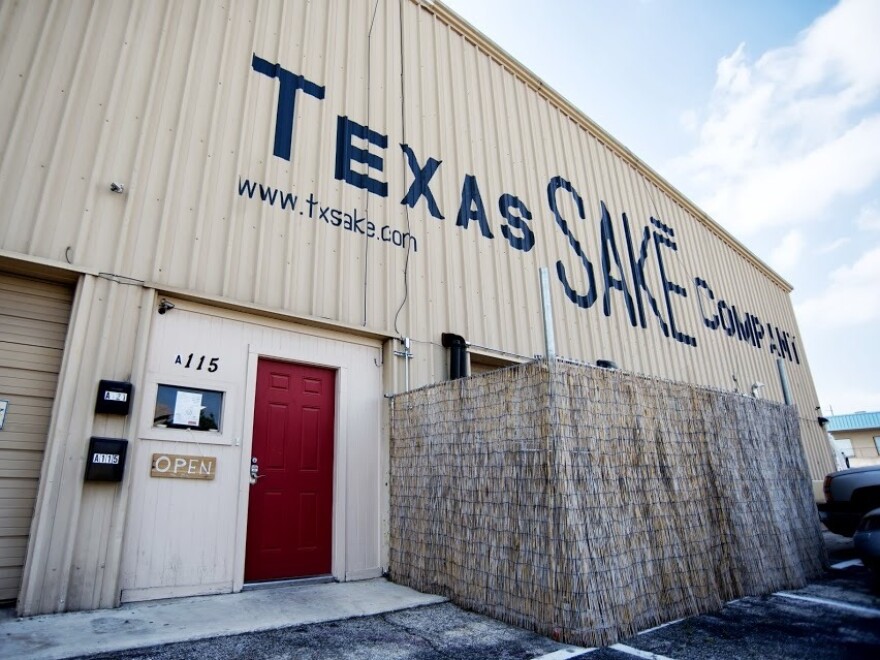Most of us are familiar with that hot, musky-smelling, cloudy drink served in teacups at sushi bars and sometimes called, erroneously, "rice wine." In other words, most of us have had bad sake.
But finally, Americans are learning to love the good stuff.
Imports of high-end sake from Japan are escalating, and countless sake-focused bars and restaurants in cities across the country are carrying hundreds of bottles each. Savvy gourmands are pairing sake with cheese and chocolate. Mixologists are making sake cocktails. Portland, Ore., has hosted a sake festival three summers in a row.
Perhaps best of all, Americans are now making their own sake. SakeOne, in Portland, has been doing so since the 1990s and now sells almost 1 million bottles per year. Much more recently, microbreweries have begun appearing in garages, warehouses and restaurant kitchens across America, turning white pearls of rice into Japan's most famous table beverage.
Several such operations are already in business, while a half-dozen others are gearing up to go. In Asheville, N.C., two microbreweries may be just weeks away from launching: and Ben's American Sake.
The latter will be based out of an izakaya-ramen restaurant called Ben's Tune-Up. Co-owner and brewer Jonathan Robinson says that, in a local market saturated with craft beers, sake helps his place stand out.
"I wouldn't want to be opening a brewery now," Robinson tells The Salt. "Everyone is making beer now, and here a lot of people have been brewing for 20 years. But with sake, we're breaking new ground."
Ben's American Sake will be brewed onsite and served on tap. The bar list will include a sake infused with honey and kumquats, as well as a carbonated, bubbly sake. Robinson also has plans to borrow a trick from the specialty beer world to make a decidedly nontraditional brew: bourbon barrel-aged sake.

Truer to Japanese styles is in Minneapolis, widely considered the original American sake microbrewery. Owner Blake Richardson toured Japan's many sake breweries before starting his own restaurant-brewery in 2008. Richardson brews and serves unpasteurized sake. He also follows Japanese tradition and brews only in the winter.
"That's when we have cold air and water, which are ideal conditions for brewing sake," he says.
Sake is, of course, made from rice — often of unique heirloom varieties that originated centuries ago in Japan. Milling is the first step: The white rice kernels are polished to remove the outer layers, which contain oils and proteins that can create foul flavors and aromas during fermentation.
The rice is then soaked and steamed before being infected with a species of mold called Aspergillus oryzae, which rapidly converts the starches into sugars. Yeast ferments these sugars into alcohol and along the way can create dazzling, almost perfume-like aromas. Sake is rarely aged and is sometimes served just weeks after brewing.
In Japan, where the oldest existing breweries were founded in pre-Columbian times, centuries of honing the sake craft have culminated in numerous indigenous varieties of brewing rice, many sake yeasts, and highly specialized brewing knowledge and equipment.
In contrast, sake brewers in America must search hard for their ingredients and gear.
"It's been difficult — the equipment just isn't here yet," says Dan Ford of Blue Current Brewery in Kittery Point, Maine. "Where would you find a 250-kilogram rice steamer in America?"
Ford and his business partner, John Sygowski, imported their steamer from Japan and are now working out of a garage. The two plan to locate to a larger facility this summer and put their inaugural bottles on shelves in the fall.
Yoed Anis, president and toji (that's "master brewer" in Japanese) at the 100-percent organic , says "the only constraint holding us back" from faster growth is the absence of a sufficient and consistent rice supply.
But not everyone is convinced that American brewers can make great sake. At , a Manhattan sake retail shop, owner Rick Smith carries only imported brands. He believes that nobody but the Japanese can produce truly great sake — at least, not yet.
"In the American arena, they're hundreds of years behind Japan," says Smith, whose shop is one of only four retail outlets in America dedicated almost entirely to sake. "In the United States, there's just no access to the quality of rice they have in Japan, or the know-how, or the equipment for processing it. I appreciate what [American craft sake brewers] are doing, but it's not yet equal to Japanese sake."
Richardson at Moto-I disagrees.
"Who ever thought in the 1970s that we could make a good chardonnay?" he says. "Who ever thought we could make a German-style pilsner? But America makes great wine and great beer, and with sake, we're seeing the same American story again."
Copyright 2021 NPR. To see more, visit https://www.npr.org. 9(MDA4NjIwNTkwMDEzMjI4NDY0MjY4ZTBlNA004))



